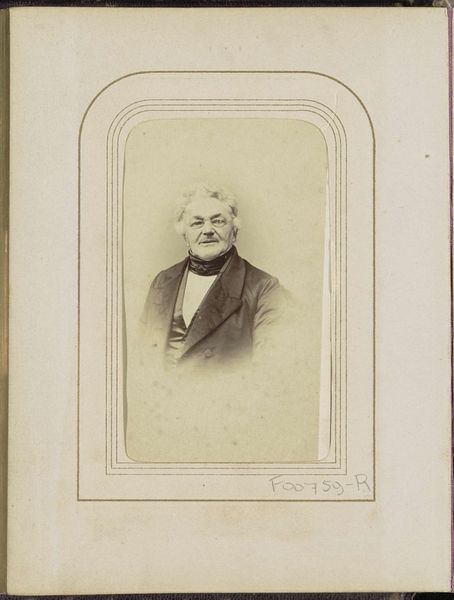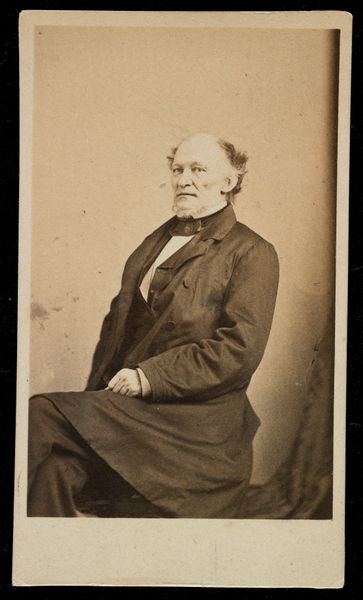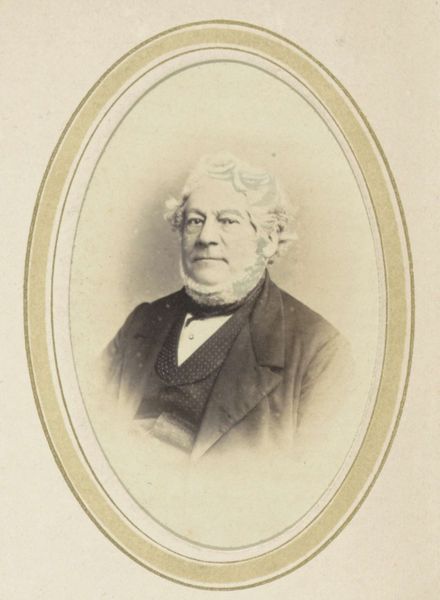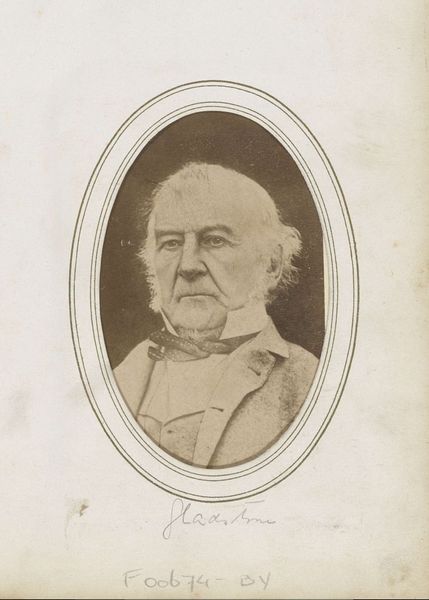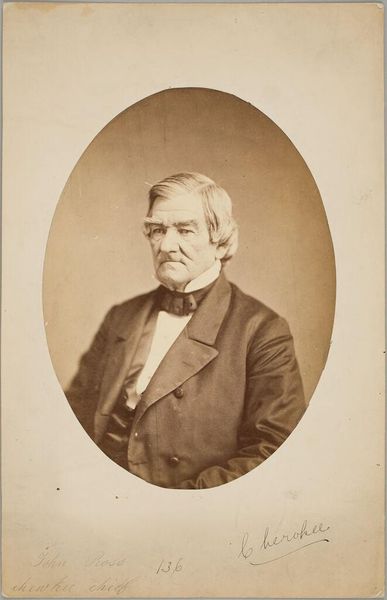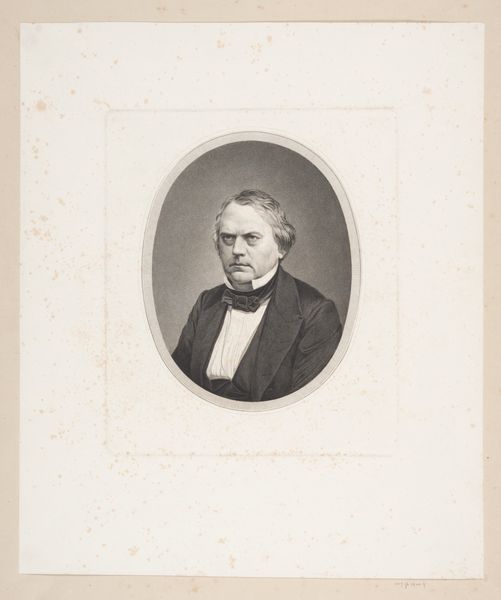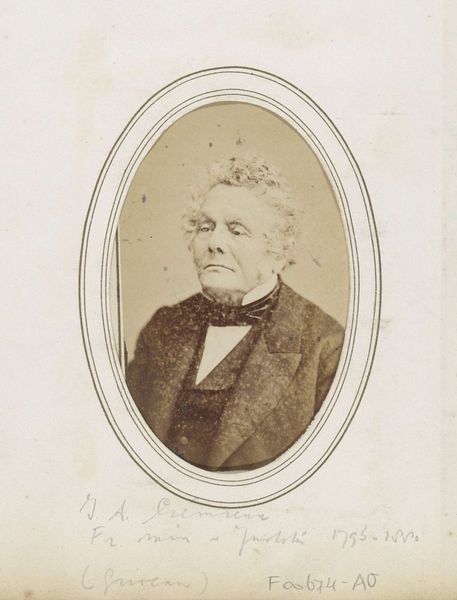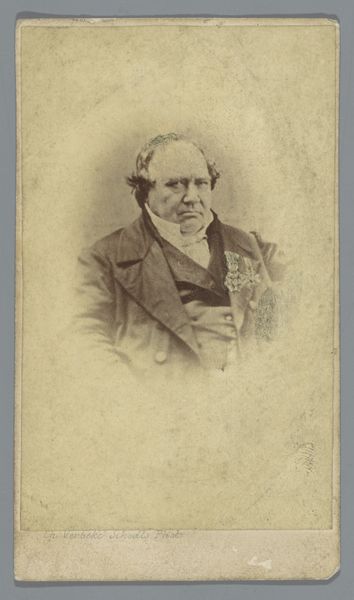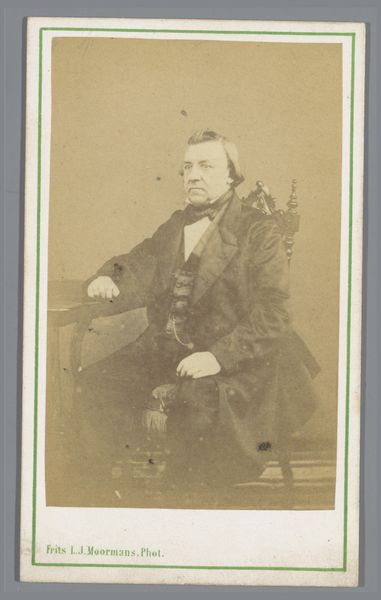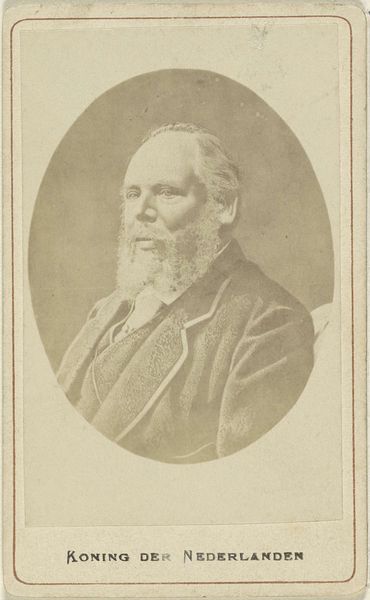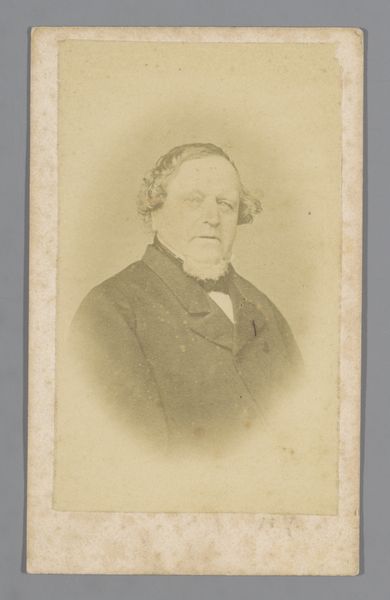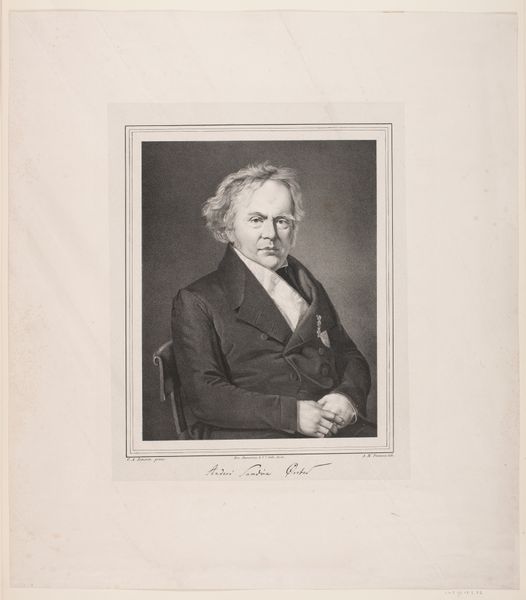
Portret van J.W. Gunning, hoogleraar aan de faculteit Wis- en Natuurkunde aan de universiteit van Amsterdam 1860 - 1880
0:00
0:00
albertgreiner
Rijksmuseum
photography
#
portrait
#
photography
#
historical photography
#
19th century
Dimensions: height 120 mm, width 85 mm, height 168 mm, width 108 mm
Copyright: Rijks Museum: Open Domain
Curator: This striking piece, housed here at the Rijksmuseum, is titled "Portret van J.W. Gunning, hoogleraar aan de faculteit Wis- en Natuurkunde aan de universiteit van Amsterdam." It's a photograph dating from somewhere between 1860 and 1880, by Albert Greiner. Editor: It’s amazing how a single image can hold so much stillness. This portrait feels so weighty, so considered. It makes you wonder what a day in the life of someone looked like in the 1800s. It’s very… reserved, wouldn’t you say? Curator: Yes, 'reserved' captures something crucial here. The 19th century was fascinated by character and 'reading' faces. Portraiture, especially photography, offered a relatively accessible means for the middle class to signal status and virtue, in visual shorthand. Note how Gunning presents himself. Editor: Exactly! That bow tie looks less tied, more strategically arranged. And what’s fascinating is that pose – there’s a softness to the professor, something more vulnerable beneath that formal attire and, well, significant sideburns! Curator: The slightly softened focus in this kind of photography also plays a role. It almost suggests a removal from the immediate world, an entry into an idealized, timeless space. Think about what Gunning represented: intellectualism, the scientific spirit… his image embodies a commitment to higher ideals. And, I find a certain determination in his expression, too, actually. Editor: I agree— there’s intelligence in his eyes. There is so much confidence there; but he just seems burdened by…something. Is it the weight of academia bearing down on him, do you think? He must’ve been so very self-aware. A heavy responsibility, captured for eternity. Curator: Indeed. This wasn't just a snapshot. It’s an intentional presentation of self. The meticulous attention to detail underscores this self-fashioning; how the public persona can overshadow more subtle emotional indicators. We see not just Gunning, the man, but Gunning, the representation of knowledge itself. Editor: Absolutely! A testament to a specific moment and to lasting ideas…I'm left feeling melancholic yet oddly inspired. How strange to connect to a long dead Professor, even for a moment. Curator: Perhaps because he reminds us that some burdens – the search for knowledge, the attempt to capture oneself accurately – remain timeless.
Comments
No comments
Be the first to comment and join the conversation on the ultimate creative platform.

